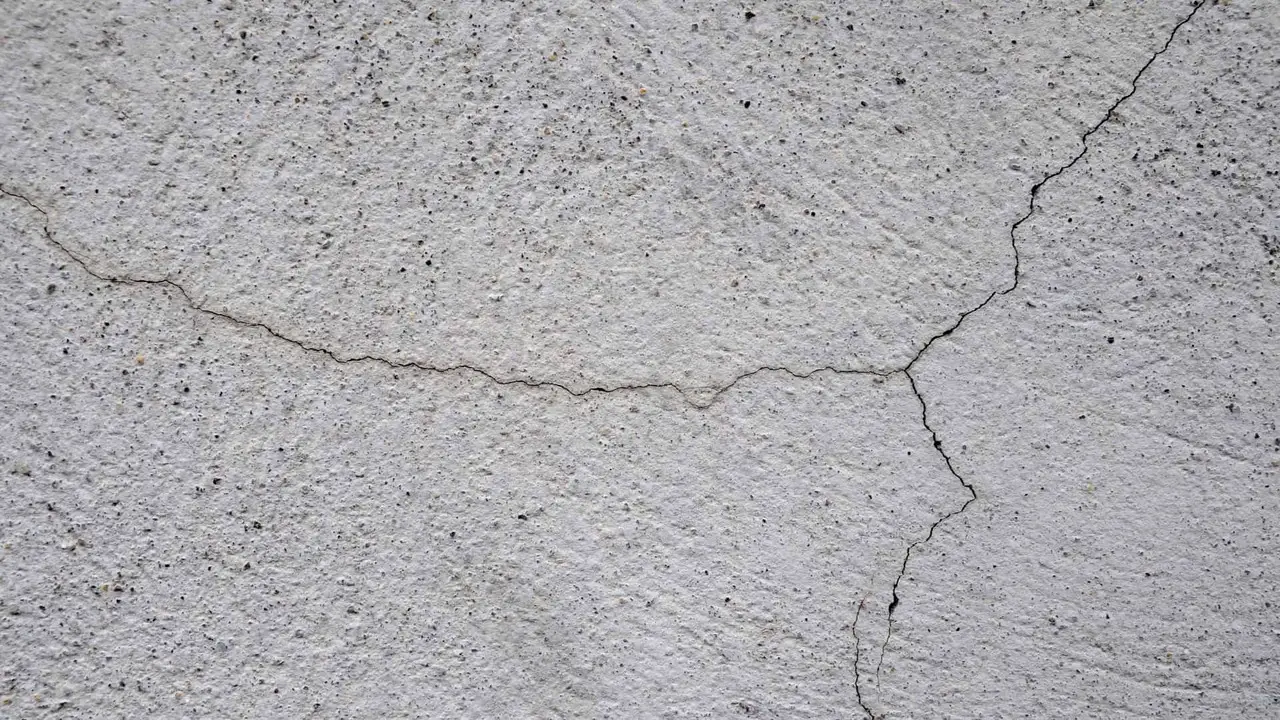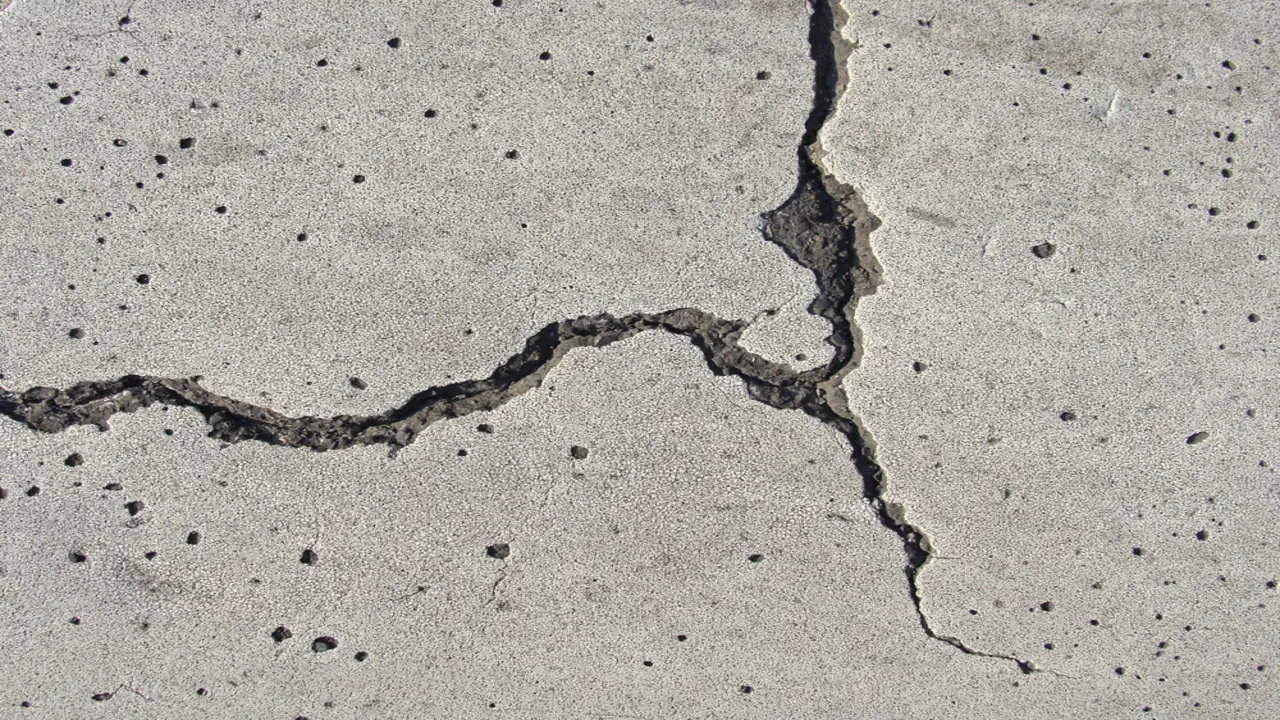Concrete is the backbone of modern infrastructure, but even the most durable structures are prone to wear and tear over time. Hairline cracks may seem minor, but they can quickly escalate into major problems if left unaddressed.
Fortunately, with the right tools and techniques, repairing hairline cracks in concrete is a straightforward process that most homeowners can accomplish. Here, we’ll explore how to fix hairline cracks in concrete and provide step-by-step instructions on how to fix them.
Whether you’re a DIY enthusiast or a seasoned professional, you must have a solid understanding of the materials and methods involved in concrete repair. We’ll cover the basics of concrete composition and explain how different factors can affect its performance. From there, we’ll dive into the specifics of hairline crack repair, including the necessary tools and materials, and provide a comprehensive guide.

Causes of hairline cracks in concrete
Hairline cracks in concrete are a common problem in new and old concrete structures. Various factors, such as shrinkage, thermal expansion and contraction, and improper curing, can cause these cracks. Shrinkage cracks occur due to the loss of moisture from the concrete during the drying process. At the same time, thermal expansion and contraction can cause cracks due to the expansion and contraction of the concrete with temperature changes. Improper curing can also lead to the formation of cracks in the concrete due to a lack of moisture, resulting in weakened concrete:
- Rapid temperature changes
- Drying shrinkage
- Poor concrete mix design or materials
- Overloading
- Settlement of underlying soil
- Poor subgrade preparation
- Improper curing techniques
Identifying the cause of the hairline cracks is important to determine the appropriate repair method. Regular maintenance and inspection can help prevent further damage and prolong the life of the concrete structure.
Tools And Materials Needed For Hairline Crack Repair

Hairline cracks in concrete can occur due to a variety of reasons, such as temperature changes, shrinkage, and settling of the soil beneath the concrete structure. These small cracks may seem insignificant, but if left unattended, they can widen and lead to more significant problems. Repairing hairline cracks in concrete is essential to maintain the structural integrity of the building and prevent further damage. You will need the following tools and materials:
- Safety goggles and gloves
- Wire brush or scraper
- Vacuum cleaner
- Concrete filler or epoxy
- Putty knife
- Sandpaper or grinder
- Sealer
Make sure to wear safety goggles and gloves to protect yourself while working with concrete. Use a wire brush or scraper to remove any loose debris or old filler from the crack. Vacuum the area to ensure it is clean.
Choose a concrete filler or epoxy that is specifically designed for use on hairline cracks. Fill the crack with the filler or epoxy using a putty knife and smooth it out thoroughly. Allow the filler to dry completely.
Once the filler is dry, use sandpaper or a grinder to smooth the surface of the concrete. Apply a sealer to protect the repair and prevent further damage to the concrete.
How To Fix Hairline Cracks In Concrete – 5 [Easy Steps]
![How To Fix Hairline Cracks In Concrete 3 How To Fix Hairline Cracks In Concrete - 5 [Easy Steps]](https://briskhand.com/wp-content/uploads/2024/01/How-To-Fix-Hairline-Cracks-In-Concrete-5-Easy-Steps.webp)
How to fix hairline cracks in concrete? To fix hairline cracks in concrete, cleaning the area thoroughly using a wire brush and water is important. Next, apply a concrete patching compound to the affected area, filling in the crack completely.
Smooth out the compound with a putty knife and allow it to dry according to the manufacturer’s instructions. Once dry, sand the surface lightly to ensure a smooth finish. Finally, apply a concrete sealer to protect the repaired area from further damage. It is important to note that hairline cracks can be a sign of a larger underlying issue, so it is recommended to consult with a professional if cracks continue to appear. Here are 5 easy steps to fix hairline cracks in concrete:
1. Clean The Crack
Thoroughly before applying any repair materials. Use a wire brush, scraper, or chisel to remove any loose debris, dirt, or old sealant from the crack. Use a vacuum cleaner or compressed air to remove any remaining dust and debris if necessary.
Once the crack is clean and dry, apply a concrete crack filler or epoxy to the crack using a caulking gun. Fill the crack and avoid leaving any air pockets or gaps. Smooth the surface of the filler material using a putty knife or trowel and allow it to dry completely. Once the filler is dry, you can sand the surface lightly to create a smooth finish. If the crack is wider than 1/4 inch, consider using a concrete patching
2. Prepare The Crack
Before you begin fixing the hairline crack in the concrete, you need to prepare the crack first. Use a wire brush or a chisel to remove loose concrete or debris from the crack. This will ensure the crack is clean and free of any material hindering the repair process. Once you have removed all the loose material, use a vacuum or compressed air to remove any dust or residue from the crack. This will ensure that the repair material adheres properly to the surface of the crack.
3. Wait For The Product To Dry

When fixing hairline cracks in concrete, waiting for the product to dry completely before proceeding with any additional steps is important. This ensures that the product has had enough time to properly bond and seal the crack, making the repair more effective and long-lasting. Generally, the drying time for concrete crack repair products will depend on the specific product being used and the environment’s temperature and humidity conditions. Following the manufacturer’s instructions for drying times and any other specific application guidelines is recommended.
4. Sand The Crack (Optional)
There are several methods to choose from. One effective method is to use a concrete patching compound to fill the crack. However, before applying the compound, it is essential to properly clean and prepare the crack to ensure the best possible adhesion of the patching material.
To prepare the crack, remove any loose or crumbling concrete and debris using a wire brush or a chisel. Then, use a vacuum or compressed air to remove any remaining dirt or dust from the crack. Next, apply a concrete bonding agent to the crack to help the patching compound adhere better. Once the bonding agent has dried, apply the patching compound to the crack, filling it completely.
5. Paint Or Seal The Crack (Optional)
Hairline cracks in concrete are a common issue that can occur due to various reasons, including shrinkage, settlement, and temperature changes. These cracks are typically less than 1/8 inch wide and may not seem significant. However, if left untreated, hairline cracks can widen and allow moisture to seep into the concrete, leading to further deterioration and damage over time. Therefore, it is important to address hairline cracks as soon as they are noticed to prevent further damage.
One option to fix hairline cracks in concrete is to use a concrete sealer or paint to seal the crack. This method involves applying a thin layer of sealant or paint over the crack, which helps prevent water penetration and further cracking.
Tips For Preventing Hairline Cracks In Concrete

Preventing hairline cracks in concrete is essential to maintaining any concrete surface’s structural integrity and aesthetic appearance. To minimize the occurrence of hairline cracks, it is necessary to ensure that the concrete mix has the correct ratio of water to cement, and that the curing process is adequate. High-quality concrete reinforcement and a proper joint spacing system can further reduce the likelihood of cracking. Here are some tips for preventing hairline cracks in concrete:
- Proper Mixing: Make sure the concrete is mixed properly according to the manufacturer’s instructions. Over-mixing or under-mixing can weaken the concrete and make it more prone to cracking.
- Control Joints: Install control joints in the concrete to allow for expansion and contraction. These joints should be placed at regular intervals and at least one-fourth the depth of the concrete.
- Reinforcement: Use reinforcing materials such as rebar or wire mesh to add strength to the concrete. This can help prevent cracking caused by heavy loads or temperature changes.
- Proper Curing: Proper concrete curing can help prevent cracking. Keep the concrete moist for at least seven days after pouring to allow it to cure properly.
- Reduce Water Content: Use the minimum water required for the concrete mix. Excessive water can weaken the concrete and increase the likelihood of cracking.
How Do You Stop Hairline Cracks In Concrete?
Hairline cracks in concrete can be a common issue that may cause concerns to property owners. However, there are several ways to stop hairline cracks in concrete. Firstly, proper curing of the concrete is crucial to prevent cracking.
Secondly, adding reinforcement such as steel or fiber mesh can help control crack formation and propagation. Thirdly, applying a concrete sealer can reduce water penetration and prevent the formation of cracks. Lastly, regular maintenance and repair of any cracks that do occur can prevent them from expanding and causing further damage. It is important to consult a professional to determine the best solution for the situation.
Should I Seal Hairline Cracks In Concrete?
Hairline cracks in concrete. The decision to seal them or not depends on the severity of the cracks and their location. If the cracks are too narrow, they may not require immediate attention, and if they do not affect the structural integrity of the concrete, they may be ignored. However, if the cracks are wider or in areas that are exposed to water, sealing them is recommended.
Sealing hairline cracks can prevent water from seeping into the concrete, which can cause further damage. Additionally, it can enhance the appearance of the concrete surface and extend its life. Therefore, it is advisable to have a professional assess the cracks and provide guidance on the best course of action.
What Is The Best Product To Fill Hairline Cracks In Concrete?

The best product is a crack filler specifically designed for concrete surfaces. These products contain a blend of epoxy or polyurethane resins that can penetrate and seal small cracks. It is important to choose a high-quality, durable, flexible product, as concrete tends to expand and contract with changes in temperature and moisture levels.
Additionally, a crack filler that is easy to apply and dries quickly is ideal, as it can save time and effort during the repair process. Ultimately, investing in a reputable concrete crack filler product can help maintain the integrity and appearance of your concrete surfaces for years to come.
Conclusion
Hairline cracks in concrete are a common problem that can be fixed with the right approach. As we have discussed, identifying the underlying cause of the cracks is crucial to ensure that the repair is effective and long-lasting. Proper surface preparation and appropriate repair materials, such as epoxy or polyurethane, can help fill the cracks and prevent further damage.
As with any repair project, attention to detail and adherence to recommended guidelines is key to achieving a successful outcome. By following these steps, property owners and maintenance professionals can address hairline cracks in concrete and maintain the integrity of their structures.We hope now you understand how to fix hairline cracks in concrete.
FAQs
What Is The Best Method For Repairing Hairline Cracks In Concrete?
The best method for repairing hairline cracks in concrete is to use a low-viscosity crack filler or epoxy injection. These materials can penetrate the tiny cracks and bind them back together, restoring the structural integrity of the concrete. It is also important to thoroughly clean the crack’s surface before applying the filler to ensure proper adhesion.
Can Hairline Cracks In Concrete Be Prevented In The First Place?
Hairline cracks in concrete cannot be completely prevented, but some steps can be taken to minimize their occurrence. These include using a lower water-to-cement ratio, proper curing methods, and reinforcement with steel or fibers. Regular maintenance and repair can also help prevent small cracks from becoming larger and more serious.
Are There Any DIY Solutions For Fixing Hairline Cracks In Concrete?
Yes, there are several DIY solutions for fixing hairline cracks in concrete. One option is to use a concrete patching compound, which can be applied to the crack with a putty knife. Another option is a concrete caulk, which can be applied with a caulking gun.
How Long Does It Typically Take To Repair Hairline Cracks In Concrete?
It typically takes a few hours to repair hairline cracks in concrete, depending on the size and severity of the crack. However, the curing time for the repair material may be several days before the surface can be used or walked on.
What Are Some Common Causes Of Hairline Cracks In Concrete?
Some common causes of hairline cracks in concrete include shrinkage during the curing process, settlement of the underlying soil, freeze-thaw cycles, heavy loads or traffic, and structural movement or settling over time.

I am passionate about tools and electric work. I love finding new tools and experimenting with them.

